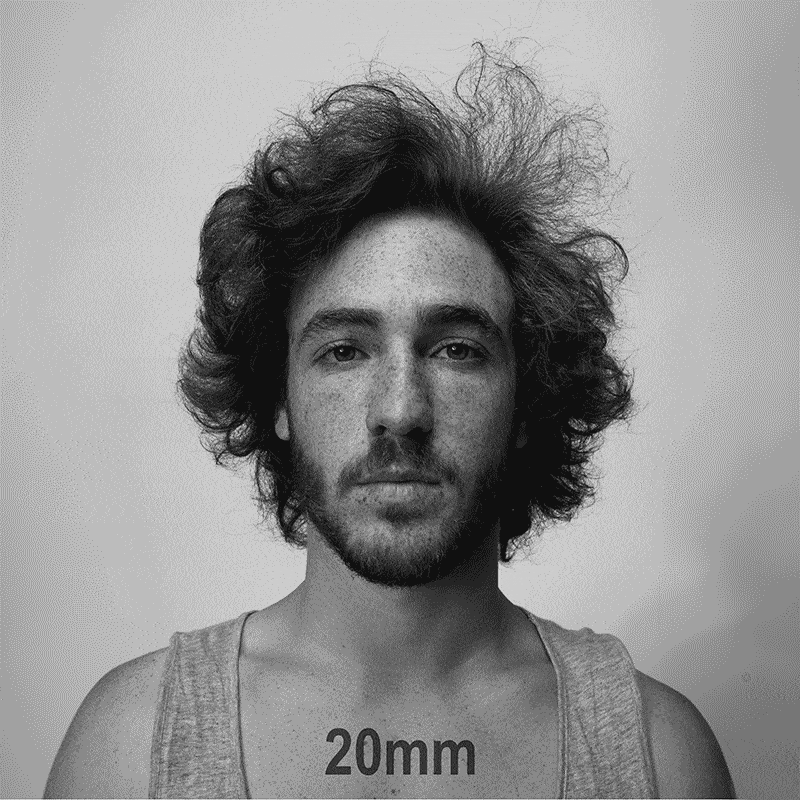From @Ulvain@sh.itjust.works : https://sh.itjust.works/comment/13658165
Additional precisions from @kamen@lemmy.world
It’s important to note that it’s the subject distance that’s the primary factor, not the focal length. The focal length is secondary in that it dictates how far you can be while maintaining the same framing. If you shoot the picture at 200 mm from the example and then without moving you shoot again at 20, you’ll have the same perspective, just way smaller subject in the frame; if you then crop in the picture shot at 20, you’ll have the same framing too, just way less pixels.
If you’re half a metre away from the dude’s nose, you’ll be roughly 60 cm away from his ears (20% more distance), but if you’re 5 metres away from his nose, you’ll be 5.10 m away from his ears (only 2% more distance) - and this is what creates the difference in apparent sizes of the facial features relating to one another.

Awesome content. What do photographers use for portraits?
85mm is the standard. If you've got a crop sensor, maybe a 50mm gets used. That's your typical portrait stuff.
Some of the better creative photographers will use anything, I've even seen some gorgeous shots with a 14mm, but that sort of fish eye is not your typical portrait look. Usually for something like incorporating more of the landscape/room into the portrait, and less of the person.
Then you've got those really tight shots, maybe ones that dont even show the whole face, those can be done on anything 200mm and up.
Personally I like 85mm-105mm for more studio standard shots, and then activity based for the rest.
Note: I'm not a pro, I'm a guy-with-a-camera. Who has spent way too much money historically on lenses, and now enjoys adapters for old lenses on new camera bodies, for very fun shots.
Any.
Generally you can always move close or further away to offset too much.
For standard corporate stuff I shoot at 70mm. For creative stuff I've shot from 24mm to 200mm.